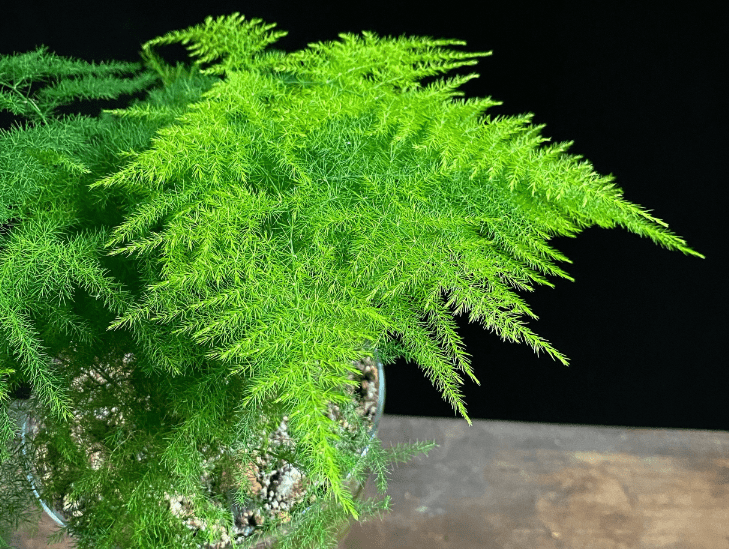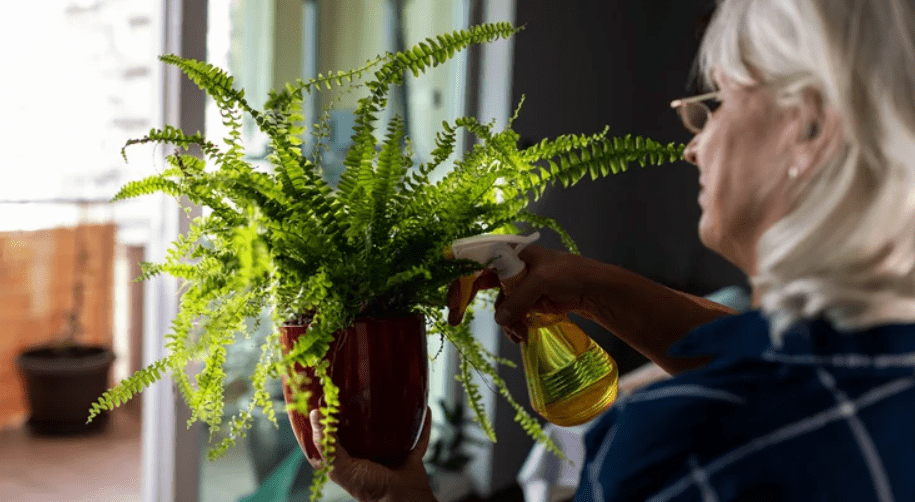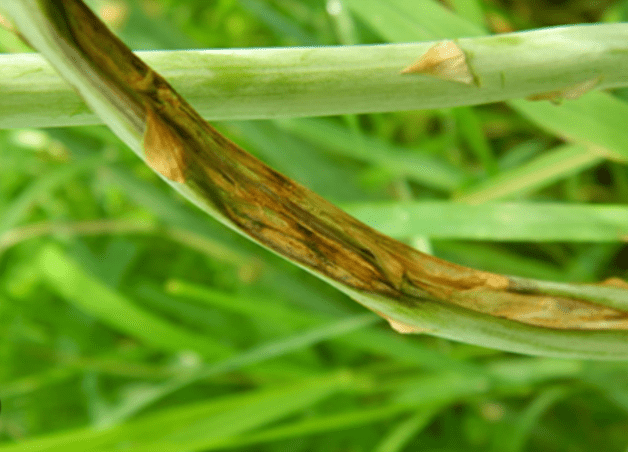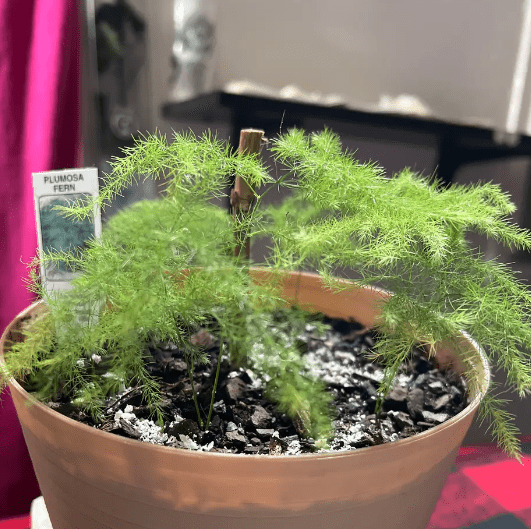
How to Fix an Asparagus Fern Turning Yellow: Expert Tips
If you’ve noticed your Asparagus fern turning yellow, it’s important to take action to help it thrive and flourish once again. Yellowing leaves on your Asparagus fern can be a sign of stress, nutrient deficiencies, or improper care. To fix this issue, start by examining the conditions of your plant’s environment and make any necessary adjustments. Ensure that your fern is receiving the right amount of sunlight, water, and humidity. Additionally, consider repotting your plant if it has outgrown its current container or if the soil is not providing adequate drainage. By taking these expert tips into consideration, you can effectively address the issue of your Asparagus fern turning yellow and promote its overall health and vitality. Your green thumb will thank you!
Table of Contents
ToggleUnderstanding the Asparagus Fern
Is crucial to providing the proper care and environment for this unique plant to thrive. Asparagus ferns are delicate, and their care requirements can be quite specific. It’s important to understand the plant’s needs in terms of light, water, and humidity. These plants thrive in bright, indirect sunlight and require a consistent watering schedule to keep the soil evenly moist. Additionally, they prefer high humidity levels, so it’s essential to provide a humid environment, especially during the dry winter months. Understanding the specific needs of the Asparagus fern will allow you to create the ideal conditions for its growth and prevent issues such as yellowing leaves. By taking the time to educate yourself about this plant, you can ensure that it remains healthy and vibrant in your home or garden. Don’t let the yellowing leaves discourage you – with the right knowledge and care, your Asparagus fern can thrive once again.

Common Causes of Yellowing in Asparagus Ferns
Overwatering
How excess water can lead to root rot and yellowing leaves.
Overwatering is a common mistake when it comes to caring for asparagus ferns. Too much water can lead to root rot, which can cause the leaves to turn yellow and eventually die. It’s important to water your asparagus fern only when the top inch of soil is dry to the touch, and to ensure that the pot has proper drainage to prevent water from pooling at the bottom. By avoiding overwatering, you can help prevent yellowing leaves and keep your asparagus fern healthy and thriving. Remember, a little bit of water goes a long way when it comes to caring for these delicate plants. It’s important to pay attention to their specific needs and adjust your care routine accordingly to avoid common issues like yellowing leaves. With the right knowledge and attention to detail, you can help your asparagus fern thrive and flourish in your home or garden.

Signs of overwatering and how to diagnose it.
Overwatering is a common mistake that many people make when it comes to caring for their plants, including asparagus ferns. It’s important to know the signs of overwatering so that you can diagnose and address the issue before it becomes a problem. One of the most common signs of overwatering is yellowing leaves. When the roots are sitting in water for too long, they can become waterlogged and start to rot, which causes the leaves to turn yellow and eventually die. To diagnose overwatering, check the soil moisture by sticking your finger into the top inch of soil. If it feels moist, then the plant doesn’t need water. Another sign of overwatering is water pooling at the bottom of the pot, which means that the pot doesn’t have proper drainage. To prevent overwatering, water your asparagus fern only when the top inch of soil is dry to the touch and ensure that the pot has proper drainage to allow excess water to escape. By paying attention to these signs and adjusting your watering routine accordingly, you can help prevent overwatering and keep your asparagus fern turning yellow healthy and thriving. Remember, a little bit of water goes a long way when it comes to caring for your plants, so it’s important to be mindful of their specific needs and avoid common issues like overwatering.
Underwatering
The effects of insufficient water on Asparagus ferns.
Insufficient water can have detrimental effects on asparagus ferns. When the roots are not getting enough water, they can become dry and brittle, causing the leaves to wilt and turn brown. To diagnose underwatering, check the soil moisture by sticking your finger into the top inch of soil. If it feels dry, then the plant needs water. Another sign of underwatering is the plant drooping and appearing limp. To prevent underwatering, water your asparagus fern turning yellow when the top inch of soil is dry to the touch and make sure to water thoroughly to reach the roots. It’s important to be mindful of your plant’s water needs and to adjust your watering routine accordingly to ensure its health and vitality. Keep your asparagus fern thriving by providing it with the right amount of water and attention it needs. Your efforts will be evident in the lush, vibrant foliage of your plant.
Identifying signs of underwatering and correcting the issue.
It is crucial to be able to identify the signs of underwatering in your plants, as it can lead to the decline of their health and vitality. One of the ways to diagnose underwatering is by checking the soil moisture. Stick your finger into the top inch of soil, and if it feels dry, then the plant needs water. Another sign of underwatering is the plant drooping and appearing limp. To prevent underwatering, water your asparagus fern when the top inch of soil is dry to the touch and make sure to water thoroughly to reach the roots. It’s important to be mindful of your plant’s water needs and to adjust your watering routine accordingly to ensure its health and vitality. Keep your asparagus fern turning yellow thriving by providing it with the right amount of water and attention it needs. Your efforts will be evident in the lush, vibrant foliage of your plant. So, be proactive in identifying signs of underwatering and correcting the issue to ensure the well-being of your plant.
Improper Lighting
The impact of both too much and too little light on the plant.
Proper lighting is essential for the health and growth of your plants. Too much light can cause the leaves of your plant to become scorched and wilted, while too little light can lead to stunted growth and a lack of vibrancy in the foliage. It’s important to find the right balance of light for your specific plant’s needs. If you notice that your plant is receiving too much light, consider moving it to a location with more shade or using a sheer curtain to filter the light. On the other hand, if your plant is not receiving enough light, consider moving it to a brighter location or using a grow light to supplement its light intake. Paying attention to the lighting needs of your plants and making adjustments as needed will ensure their health and vitality. By providing the right amount of light, you will see your plants thrive and flourish, rewarding you with lush, vibrant foliage. So, take the time to assess the lighting conditions for your plants and make the necessary adjustments for their well-being. Your efforts will be reflected in the health and beauty of your plants.

How to provide the right amount of light to prevent yellowing.
When it comes to providing the right amount of light for your plants, it’s crucial to find the perfect balance. Too much light can lead to yellowing and wilting, while too little light can result in stunted growth and pale foliage. To prevent yellowing, it’s important to assess the specific light requirements of your plants and make adjustments accordingly. If you notice that your plant is receiving too much light, consider moving it to a location with more shade or using a sheer curtain to filter the light. On the other hand, if your plant is not receiving enough light, consider moving it to a brighter location or using a grow light to supplement its light intake. Paying attention to the lighting needs of your plants and making adjustments as needed will ensure their health and vitality. By providing the right amount of light, you will see your plants thrive and flourish, rewarding you with lush, vibrant foliage. So, take the time to assess the lighting conditions for your plants and make the necessary adjustments for their well-being. Your efforts will be reflected in the health and beauty of your plants.
Nutrient Deficiencies
Are a common issue that can have a negative impact on the health and growth of your plants. It’s important to be aware of the specific nutrient requirements of each type of plant and to ensure that they are receiving the necessary nutrients for optimal growth. If you notice any signs of nutrient deficiencies, such as yellowing leaves or stunted growth, it’s important to take action to address the issue. Consider using a balanced fertilizer to provide the necessary nutrients to your plants or consider using organic methods such as compost or mulch to enrich the soil. By addressing nutrient deficiencies and providing your plants with the essential nutrients they need, you will be able to promote their overall health and vitality. Don’t overlook the importance of proper nutrition for your plants. By taking the time to address any nutrient deficiencies, you will be rewarded with healthy, thriving plants that will bring beauty and joy to your home or garden. So, be proactive in addressing nutrient deficiencies and prioritize the health and well-being of your plants.
Temperature Stress
Is a common challenge for plants, but with the right care and attention, you can help your plants thrive in any climate. It’s important to understand the specific temperature requirements of your plants and take steps to protect them from extreme temperatures. Consider using shade cloth or mulch to provide protection from the sun and to retain moisture in the soil during hot weather. In cold temperatures, you can use cloches or row covers to create a warmer microclimate for your plants. Additionally, you can bring potted plants indoors during extreme temperatures to protect them from harm. By taking proactive measures to protect your plants from temperature stress, you can ensure their health and longevity. Don’t let the weather dictate the success of your garden – take charge and provide the care and attention your plants need to thrive in any temperature. Your efforts will be rewarded with a beautiful and resilient garden that brings joy and beauty to your home.
Pests and Diseases
Are a common challenge in gardening, but there are steps you can take to protect your plants. One effective method is to practice good garden hygiene by removing any diseased or infested plants and cleaning up any debris that may harbor pests or diseases. You can also use natural pest control methods, such as introducing beneficial insects or using organic sprays, to keep pests at bay. Additionally, planting a diverse range of plants can help reduce the risk of pest and disease outbreaks. By being proactive and attentive to the health of your garden, you can mitigate the impact of pests and diseases and ensure the success of your plants. Don’t let these challenges discourage you – with the right strategies, you can keep your garden thriving and beautiful.

How to Revive an Asparagus Fern Turning Yellow
Assessing the Problem
When it comes to gardening, it is important to address the challenges that come your way. Pests and diseases are common issues that can plague your garden, but with the right strategies, you can protect your plants and ensure their health and vitality. Good garden hygiene, natural pest control methods, and planting a diverse range of plants are all effective ways to mitigate the impact of pests and diseases. By being proactive and attentive to the health of your garden, you can overcome these challenges and create a beautiful and resilient garden that brings joy and beauty to your home. Don’t let these challenges discourage you – with the right approach, you can keep your garden thriving and flourishing.
Correcting Watering Practices
Is crucial for the health and vitality of your plants. Proper watering techniques can make all the difference in the success of your garden. Overwatering can lead to root rot and other moisture-related issues, while underwatering can cause wilting and stunted growth. It’s important to monitor the moisture levels of your soil and adjust your watering schedule accordingly. By being proactive and attentive to the needs of your plants, you can ensure that they receive the right amount of water to thrive. Consider using a soaker hose or drip irrigation system to deliver water directly to the roots of your plants, minimizing water waste and promoting healthy growth. Don’t let improper watering practices hinder the beauty and success of your garden. With the right approach, you can ensure that your plants receive the care they need to flourish. Keep at it, and with the right strategies, your garden can be a vibrant and thriving oasis.
Adjusting Light Conditions
Is crucial for the health and growth of your plants. It’s important to understand the light requirements of each plant in your garden and make adjustments as needed. Plants that require high light should be placed in areas with direct sunlight, while plants that thrive in low light should be positioned in shaded areas. By paying attention to the light conditions and making necessary adjustments, you can ensure that your plants receive the optimal amount of light to thrive. Consider using reflective materials or shade cloth to redirect or filter sunlight as needed. Don’t let improper light conditions hinder the growth and beauty of your garden. With the right approach, you can create an environment that promotes healthy and vibrant plant growth. Take the time to assess and adjust the light conditions in your garden, and you will see the difference it makes in the health and vitality of your plants. Your garden has the potential to be a stunning and flourishing haven with the right light adjustments.
Fertilizing and Nutrient Management
Are essential for maintaining the health and growth of your plants. It is important to provide your plants with the necessary nutrients they need to thrive. By using the right fertilizers and managing the nutrients in your soil, you can ensure that your plants have everything they need to grow strong and healthy. Take the time to understand the specific needs of each plant in your garden and provide them with the appropriate fertilizers and nutrients. This will help to promote strong root development, lush foliage, and vibrant blooms. Don’t underestimate the power of proper fertilizing and nutrient management in creating a beautiful and flourishing garden. With the right approach, you can create an environment that supports the optimal growth and health of your plants. Invest in high-quality fertilizers and commit to proper nutrient management to ensure the success of your garden. Your plants will thank you for it with their stunning and healthy growth.

Managing Temperature and Humidity
Is crucial for maintaining a healthy and thriving environment for your plants. By monitoring and controlling the temperature and humidity levels in your garden, you can create the ideal conditions for plant growth and development. Whether you are planting fruits, vegetables, or flowers, it’s important to understand the specific temperature and humidity requirements of each plant. By using tools such as thermometers and hygrometers, you can accurately monitor the conditions in your garden and make adjustments as needed. Investing in tools such as shade cloth or greenhouse heaters can also help you maintain the optimal temperature and humidity levels for your plants. By taking the time to manage temperature and humidity, you can create an environment that promotes strong, healthy, and vibrant growth for all of your plants. Your efforts will be rewarded with a beautiful and successful garden that you can be proud of.
Dealing with Pests and Diseases
Is an essential part of maintaining a thriving garden. No one wants to see their hard work destroyed by pesky pests or harmful diseases. It’s important to take proactive measures to prevent and control these issues. Integrated pest management involves using a combination of methods, such as natural predators, traps, and organic pesticides, to keep pests at bay. Regularly inspecting your plants for signs of disease and promptly treating any issues can help prevent the spread of diseases throughout your garden. It’s also crucial to maintain a clean and healthy garden environment by removing any diseased or infested plants and properly disposing of them. By staying vigilant and proactive, you can protect your garden from pests and diseases and ensure that your plants thrive and flourish. Don’t let pests and diseases ruin all of your hard work – take the necessary steps to keep your garden healthy and beautiful.
Preventing Future Yellowing in Asparagus Ferns
Establishing a Proper Care Routine
Is essential for keeping your plants healthy and thriving. By establishing a proper care routine, you can ensure that your plants receive the necessary nutrients, water, and sunlight to flourish. Regular watering, pruning, and fertilizing can help prevent yellowing in asparagus ferns and promote healthy growth. It’s important to monitor the soil moisture levels and adjust your watering schedule accordingly to prevent overwatering or underwatering, which can contribute to yellowing. Additionally, providing the proper amount of sunlight and ensuring proper drainage in your plant’s pot or garden bed can also help prevent yellowing. By establishing a proper care routine and staying consistent with your plant care practices, you can prevent future yellowing in asparagus ferns and enjoy beautiful, vibrant plants in your garden. Don’t let yellowing in your plants discourage you – take proactive steps to establish a proper care routine and keep your plants healthy and thriving.
Seasonal Care Tips
Asparagus ferns are beautiful and vibrant plants that can bring a touch of elegance to any garden or indoor space. To ensure your asparagus ferns stay healthy and thriving, it’s important to establish a proper care routine. Preventing future yellowing in asparagus ferns is essential for maintaining their vibrant green color and promoting healthy growth.
First and foremost, regular watering, pruning, and fertilizing are key components of a proper care routine for asparagus ferns. Monitoring the soil moisture levels and adjusting your watering schedule accordingly can help prevent overwatering or underwatering, which can contribute to yellowing. Additionally, providing the proper amount of sunlight and ensuring proper drainage in your plant’s pot or garden bed can also help prevent yellowing.
As the seasons change, it’s important to adjust your care routine accordingly. During the warmer months, you may need to water your asparagus ferns more frequently, while in the colder months, you may need to cut back on watering. You should also consider fertilizing your plants during the growing season to provide them with the necessary nutrients for healthy growth.
By staying consistent with your plant care practices and taking proactive steps to establish a proper care routine, you can prevent future yellowing in your asparagus ferns and enjoy beautiful, vibrant plants in your garden. Don’t let yellowing in your plants discourage you – with the right care and attention, you can keep your asparagus ferns healthy and thriving throughout the seasons.
In conclusion, taking care of your asparagus fern is crucial to keeping it healthy and vibrant. By following the expert tips in this post, you can prevent your fern from turning yellow and ensure it adds beauty to your home or garden. With proper care and attention, your asparagus fern can thrive and bring joy for years to come. Don’t let your fern suffer – take action now and keep it looking its best!
Frequently asked questions And Answer
The most common reason for an asparagus fern turning yellow is overwatering. This can lead to root rot and cause the leaves to turn yellow. It could also be due to lack of sunlight or poor soil conditions.
First, make sure you are not overwatering your plant. Allow the soil to dry out between waterings and make sure the pot has good drainage. Also, ensure your plant is getting enough sunlight, as asparagus ferns thrive in bright, indirect light. You may also want to consider repotting your plant in fresh, well-draining soil.
Yes, with proper care and attention, you can save your yellowing asparagus fern. By adjusting your watering and light conditions, and providing it with the right soil, you can help your plant recover and thrive once again.
The recovery time for a yellowing asparagus fern can vary depending on the severity of the issue and how well you address the problem. With proper care, you should start to see improvements in a few weeks to a couple of months.
In addition to proper watering and lighting, make sure to regularly fertilize your asparagus fern during the growing season and keep an eye out for pests. Pruning and grooming your plant can also help promote healthy growth.
If you have tried adjusting your care routine and your asparagus fern is still struggling, it may be beneficial to seek advice from a professional plant care specialist or horticulturist. They can provide personalized recommendations for your specific plant and help diagnose any underlying issues.
